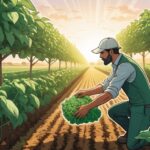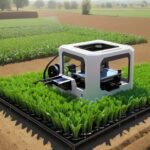The Role of Robots in Modern Farming
In recent years, technology has quietly woven itself into the fabric of agriculture, transforming the way we grow and harvest food. Among the most fascinating advancements is the integration of robots into farming—a shift that promises efficiency, sustainability, and a gentle easing of labor demands.

A Helping Hand in the Field
Farming has always been labor-intensive, requiring long hours and physical effort. Robots, however, are stepping in to assist with tasks that are repetitive, time-consuming, or even hazardous for humans. From autonomous tractors plowing fields with precision to robotic arms delicately picking fruits, these machines are designed to work alongside farmers, not replace them.
Precision and Care
One of the greatest advantages of agricultural robots is their precision. Equipped with advanced sensors and artificial intelligence, they can monitor crop health, apply fertilizers or pesticides only where needed, and even identify weeds for removal. This targeted approach reduces waste, lowers chemical usage, and supports more sustainable farming practices.
Gentle Harvesting
Delicate tasks, such as harvesting strawberries or apples, require a careful touch—something robots are increasingly capable of. With soft grippers and computer vision, these machines can pick produce without bruising it, ensuring quality while easing the strain on human workers during peak seasons.
Supporting Sustainability
Modern farming faces the dual challenge of meeting global food demands while minimizing environmental impact. Robots contribute by optimizing resource use—watering crops only when necessary, reducing soil compaction with lightweight designs, and even planting cover crops to improve soil health. Over time, these small efficiencies add up to meaningful change.
The Human Connection
Some may worry that robots will distance farmers from their land, but the opposite may be true. By handling routine tasks, these machines free up time for farmers to focus on strategy, innovation, and the deeper aspects of stewardship. Rather than replacing human intuition, robots serve as tools that enhance decision-making.
Looking Ahead
The future of farming is not about replacing tradition with technology but finding harmony between the two. As robots become more accessible and adaptable, small and large farms alike can benefit from their support. The goal is simple: to cultivate food more thoughtfully, sustainably, and efficiently—so that both the land and those who tend it can thrive.
In the quiet hum of a robotic harvester or the steady path of an autonomous planter, there’s a reminder that progress in farming doesn’t have to be loud or disruptive. Sometimes, it’s just about making the work a little easier, the yields a little better, and the future a little brighter.



